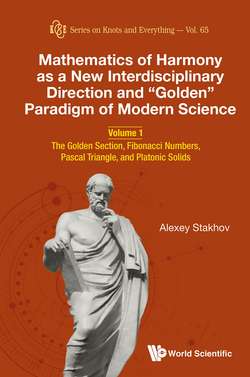Читать книгу Mathematics of Harmony as a New Interdisciplinary Direction and “Golden” Paradigm of Modern Science - Alexey Stakhov - Страница 31
На сайте Литреса книга снята с продажи.
1.3.3. The Proclus hypothesis and “key” problems of ancient mathematics
ОглавлениеAs it is well known, the Russian mathematician academician Kolmogorov in his book [102] singled out two “key” problems, which stimulated the development of mathematics at the stage of its origin, the problems of counting and measurement. However, another “key” problem, which emerged from the Proclus hypothesis is the harmony problem which was connected with Platonic solids and the golden section, one of the most important mathematical discoveries of ancient mathematics (Proposition II.11 of Euclid’s Elements). It was this problem that Euclid laid in the foundation of Elements. According to Proclus, the main purpose of Elements was to create the geometric theory of the Platonic solids, which in Plato’s cosmology was expressed as Universal Harmony. This idea leads to a new view on the history of mathematics, as presented in Fig. 1.9.
The approach, shown in Fig. 1.9, is based on the following reasoning. Already, at the stage of origin of mathematics, a number of important mathematical discoveries were obtained; they fundamentally influenced the development of mathematics and all science on the whole. The most important of them are as follows:
(1) The positional principle of numbers representation. This was discovered by Babylonian mathematicians in the second millennium BC and embodied by them in the Babylonian positional numeral system with the base of 60. This important mathematical discovery underlies all subsequent positional numeral systems, in particular, the decimal system, the basis of mathematical education, and the binary system, the basis of modern computers. This discovery, ultimately, led to the formation of the concept of natural numbers
